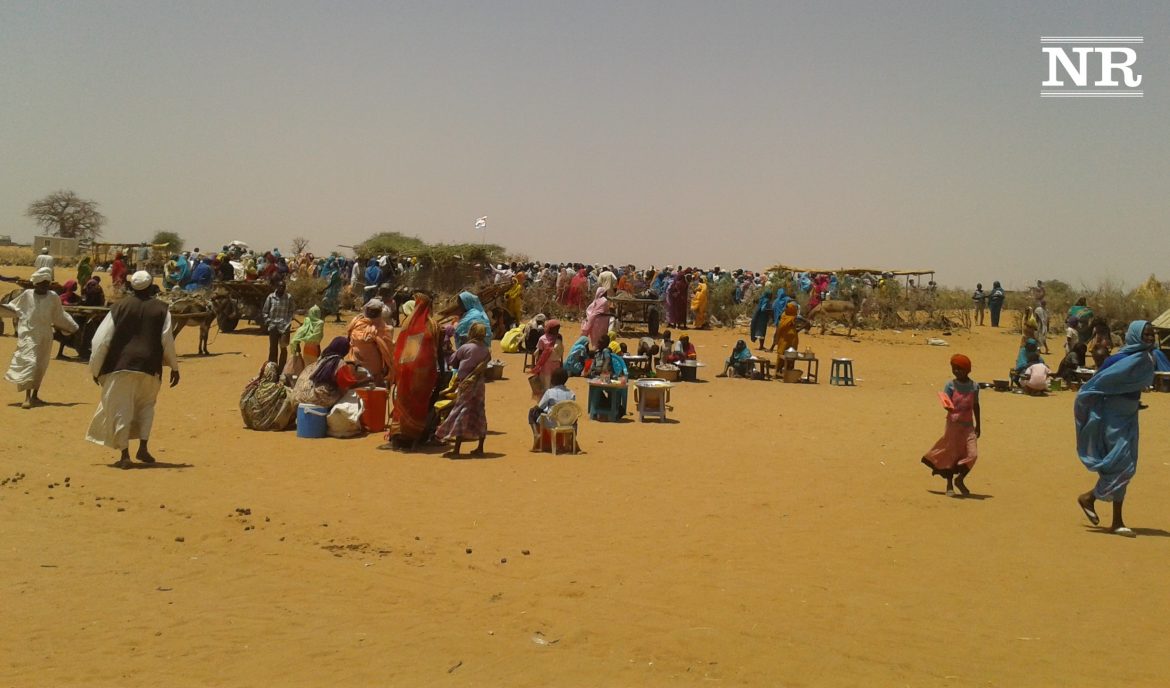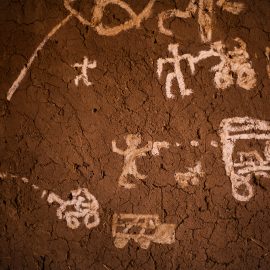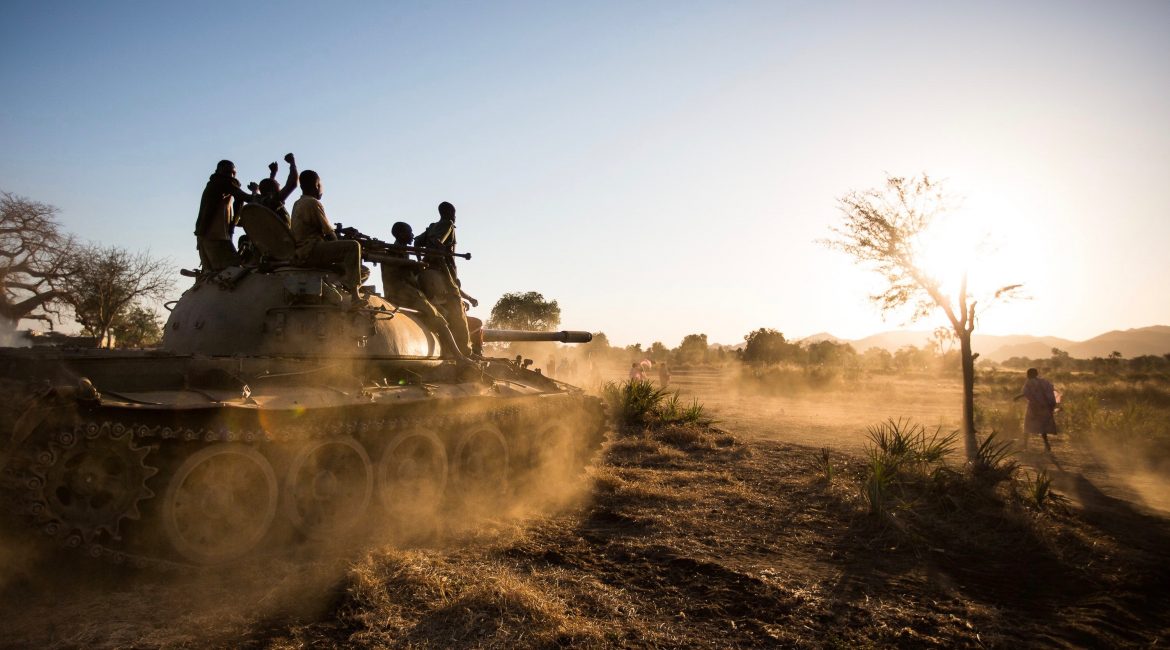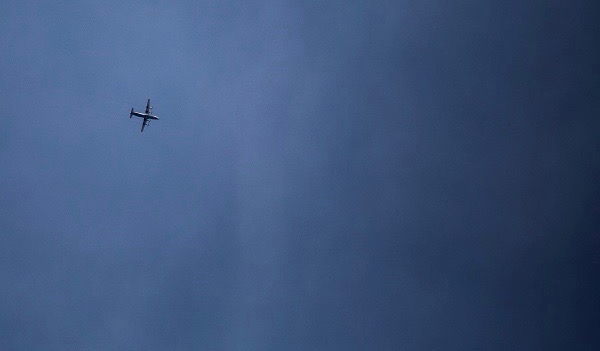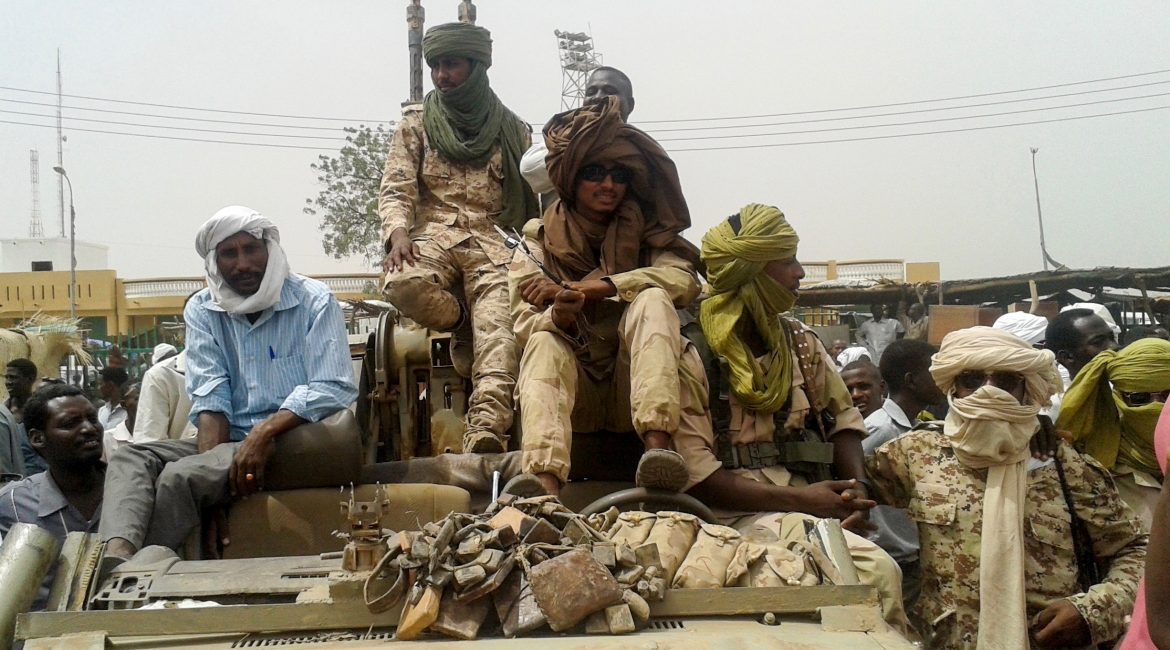The Sudanese government has created a new paramilitary group out of disaffected Janjaweed from Darfur. Over the last year the Rapid Support Force (RSF) has ridden across the country on Toyota technicals ravaging the region in the name of the Sudan Army.
After training in Khartoum the group fought in South Kordofan against SPLA-N and JEM fighters and plundered the city of El Obeid. The group has also battled rebels in Darfur, often targeting civilians viewed as sympathizing with anti government rebels sending thousands to IDP camps and igniting fears of ethnic cleaning.
On March 19, wind whipped through the Darfuri capital of El Fashir, blowing through the empty streets of the usually bustling town. The only other sound was the occasional ricochet of bullets against the capital’s old stone houses. In the marketplaces and the neighborhoods, residents cowered behind locked doors and waited for the “state of terror” to pass, as with the wind.
After months of fighting and looting in North and South Kordofan, the RSF – commissioned by the government as a rough and ready spearhead to combat rebel forces around the country – had somehow turned their sights on El Fashir’s police forces. Representatives of the RSF said they were chasing rebels from Darfur’s Sudan Liberation Army (SLA). SLA leader Minni Minnawi launched series of offensives against government troops in south and north Darfur earlier in the month. But when gunfire stopped, four of El Fashir’s residents and one policeman lay dead.
The unit has proved an unstable, yet effective answer to the insurrections in Sudan’s peripheries. The RSF has reignited the conflict in Darfur, plunging the region back into chaos and confusion not seen since 2004. The unit has also been deployed as the main weapon in a government offensive against the SPLA-North as the fighting season draws to a close.
A New Force
Formed by the government in 2013, the RSF was created with some 5000 Janjaweed militia. The new force is headed by a Darfuri Arab commander named Mohammed Hamdan Doglu, also known as “Himmeidti.” The group been riding across Sudan on brutal government business since its birth in Khartoum.
Over the past year, the grind of the myriad wars around Sudan as well as the stagnant economy and shrinking budgets have taken their toll on the Sudan Armed Forces (SAF). Low morale among mid-level officers, the unspoken threat of a coup and a lack of progress against rebel groups have forced the government to rely more heavily on paramilitary units like the RSF.
According to a military source within the SAF, the RSF is made up of militia groups deployed to protect Khartoum after JEM’s bold, but unsuccessful attack on the city. The groups remained in military bases in Wadi Sayyidna area in Khartoum to receive training while others were sent to Al-Quitainah in the White Nile in order to train for a counter-offensive against rebels in Blue Nile.
A SAF officer told Nuba Reports the militia “received training under the direct supervision of former vice-president Ali Osman Mohamed Taha.”
A recent report from the Uganda-based, Sudan Democracy First Group (SDFG), says Sudan’s National Intelligence and Security Service – NISS – was given control of the RSF, as well as a mandate to combat the rebel groups in Darfur, South Kordofan and Blue Nile. Since then, the report continues, “the RSF have been committing atrocities with absolute impunity.”
The Battle for Toroje
According to the SAF source and the SDFG, the RSF left their bases in Khartoum with instructions to move towards Kordofan in mid-August of 2013. They travelled along the White Nile through the cities of Kosti, Tandalti and Rashad in Northern Kordofan state.
RSF forces then moved down into South Kordofan where they launched a full scale assault against the SRF. According to eyewitnesses, the troops mustered in Khirasana, near the oil-industry hub, Heglig before attacking Toroje.
An SRF stronghold, Toroje sits along the road linking South Kordofan to South Sudan. The road is a major supply route for SRF forces in South Kordofan as well as a corridor for refugees fleeing the violence.
According to the SRF, the Rapid Support Force attacked Toroje on January 4th, with more than 300 machine-gun-mounted trucks and 10 tanks. After a brief skirmish, the rebel forces – which included elements from South Kordofan’s SPLA-North and Darfur’s JEM – retreated. Overnight, the rebels shelled the area and occasionally shot at Rapid Support Force positions.
In the morning they two groups launched a large counter attack, lead by the more mobile JEM forces. After a fierce, but brief battle – in which the SRF claims to have killed more than 300 – the Rapid Support Force fled, leaving behind dozens of vehicles claimed by the rebel forces.
Following the defeat, the Rapid Support Forces returned to North Kordofan. Eyewitnesses in North Kordofan’s capital city Al-Obayid and the towns of Wad-Ashana and Abu-Zabad said the retreating RSF forces looted markets and killed bystanders as they rode through. One local shop-owner in Al-Obayid said that on November 16 he saw a group of seven men belonging to the militias “raping in turn a 33 year old lady in Al-Tayyiba neighborhood in the city.”
Other witnesses also reported seeing a large numbers of RSF troops wandering around the markets in Al-Obayid. One shopkeeper said the militiamen took goods from shops and ate in restaurants without paying. When business owners demanded compensation, they were told: “You will be paid by [former First Vice President] Mr. Ali Osman Mohamed Taha”
In addition the RSF allegedly set up checkpoints on the highway between north and south Kordofan to collect taxes from passing trucks and passenger buses.
Soon after the RSF’s arrival, residents in Al-Obayid took to the streets to protest the presence of the heavily armed militia. They demanded that governor Ahmed Haroun either expel the RSF or resign from office.
After several meetings with officials in Khartoum, Haroun eventually managed to convince the RSF to leave in early February and move on to Darfur. According to the military source, the group only agreed after receiving a payment of 3 million US dollars. This compensation was supposedly a part of an earlier deal with former Vice President Taha.
Moving to Darfur
Following the pay off the RSF troops moved into Darfur with a mandate to hit rebel forces. On March 3, a rally was held in their honor in the town of Nyala. Addressing the troops at the ceremony, South Darfur governor Adam Mahmoud Jar-al-Nabi said “These forces were deployed into Darfur from Kordofan region in order to cleanse insurgents. They are ready to support the army in the best possible manner. That’s why they are dubbed as Rapid Support Forces so as to be deployed rapidly to any front at any time to defend the right in the face of falsehood.”
The RSF was directed to attack SLA rebels responsible for recent attacks in the area. But instead of engaging the rebels they attacked the area’s civilians.
According to the United Nations, the RSF attacked and burned at least 30 villages south-east Nyala on February 27 and 28, days before its formal welcoming ceremony. The UN said fighters targeted a bloc of villages largely populated by the Fur and Zaghawa ethnic groups. The attackers opened fire on unarmed civilians, killing dozens, burning down houses, looting property and forcing 40,000 to flee to IDP camps in Nyala.
RSF forces then moved into north Darfur, hitting towns in North Darfur State. On March 11, RSF forces attacked Mellit, some 60 kilometers north of the capital, El Fashir.
“What they have done is beyond description,” said one resident. “The militias attacked the towns of Malawi and Maleet and killed people, buried wells and burned houses.”
Another eyewitness from the area gave a similar account, describing an assault on the nearby town of Malawi on March 11 and 12. “Some of them were driving cars, others were on camels and horseback. They burned more than 15 villages in the area, including the villages of Coma, Jamama, al-Daw, Aulad-Mokhtar, and Ammar Jadeed. They burned and looted all property, including livestock in addition to the killing of dozens of civilians.”
Then, just a week later, targeting those displaced from the earlier attacks, the forces assaulted towns around El Fashir again.
In a strongly worded statement issued March 27, the head of the UN peacekeeping mission in Darfur (UNAMID) slammed the attacks by RSF on IDPs camps, calling on the government to allow access to aid agencies to provide humanitarian assistance to civilians in the conflict zones.
“The ongoing attacks on civilian villages and camps for internally displaced people, alleged to be carried out by the Rapid Support Forces, are a matter of concern and are an ugly blemish on our efforts to dialogue”, UNAMID chief Mohamed Ibn Chambas said during a speech at Darfur peace forum hosted by the Chadian government in the border town of Um-Jaras.
Chambas added that over 2000 people fled to a UN base following an attack on the town Khor Abeche in South Darfur on Saturday March 22. There, the marauders killed civilians, burnt houses, and looted livestock.
New Fronts
Khartoum has responded to the violence by sacking its top military commander in North Darfur. It has also re-tasked its official military forces to fight rebel groups in the state.
But according to a civil society activist who asked to remain anonymous, the RSF is part of Khartoum’s long-term counterinsurgency strategy. “The government is not confident about the capabilities of the army in doing the job,” she said. “This is because the army is either unwilling or unable to continue with these endless wars. The problem we have now is that these militia groups will apply a scorched land policy.”
Since the attack on El Fashir, Rapid Support Forces have been seen by residents throughout South Kordofan, where it is believed they are massing for a large-scale attack before the beginning of the rainy season. The reports of RSF movement ranging from Kadugli in the west, Talodi in the South and Abu Jubeiha in the far east, the violence threatens to engulf the whole state.
*The preceding story and video have been republished with permission from 3ayin.com

